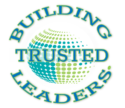A Personal Message from Robert Porter Lynch,
Co-Founder
Many consider that much of this spend is wasted or sub-optimized.
In spite of the decades of efforts by conscientious, well-intended individuals and organizations, leadership development has marginally achieved its promise to workplace improvement in terms of job-satisfaction, employee engagement, or high performance teamwork.
As a consequence, astute corporate executives, especially HR leaders, are demanding proven metric-based results for their expenditure of resources on leadership development initiatives.

We are committed to ensuring the investment of every training dollar sees a ten times return on investment.
Our approach makes a difference and produces results.
It starts with our revolutionary approach to leadership as a system of Four Alignments, and is based on Action Learning (see below) that applies learning directly to real life situations in your organization, not distant case studies.
Collaborative Leadership has been proven to lower turnover because it:
- engages people
- improves morale
- builds tight teams
- creates high levels of trust
- recognizes the value of people
- channels energy into purposeful action
- capitalizes on the joint creative energies of employees
- empowers employees to become more entrepreneurial
- flows ideas and innovation across internal and external boundaries
- maximizes the creation of value while reducing non-value added work

For example, in one study of nearly 30,000 Americans and Canadians, one of our colleagues found that a 10% increase in trust was the equivalent of a 30-40% pay increase in terms of sense of well-being.
This is very important because trust thereby increases morale, increases engagement, increases retention, and increases productivity — for very little investment.
Our analysis of the positive cause and effect impact of collaborative leadership is the primary reason why we focus strictly on collaborative leadership.
Therefore, our training team isn’t necessarily those with PhD degrees, but rather those who are either Thought Leaders or “Pracademics” with solid, documented track records of success in the real world and who can also teach.
This is why we created our Action Learning System. It consists four inter-related elements:
We recognize that much of leadership training cannot be done solely as an academic exercise, because it can only be exercised in the heat of a real challenge – in the crucible of action and the tension of emotions.
We ensure that every principle or success factor can be distilled into a usable “best practice,” to which we provide a set of “tools” (questions, frameworks, diagnostics, etc.) that then are applied to real life situations. We know that when people are able to apply something immediately, they retain 80% of what they learned three weeks later; but if they can’t apply it, their retention plummets to 20% or less three weeks later.
When possible and practical, for very senior level training we team two top notch people to present programs:
- Thought Leader -- most advanced thinking (typically a "pracademic" who spent many earlier years in the field, then wrote a book, followed by training executives later in their career).
- Senior Executive -- best wisdom of experience (typically a very seasoned leader who has had a wide variety of organizational experiences, and has seen both success and failure, and knows the difference.)
For managerial level training, program delivery is done with a single "pracademic."
For Executive Leadership Programs we have learned that the consequences of sending one single, lone individual to leadership programs can often produce marginal results. Why? Because when they return to work, they are faced with the challenge of having the “corporate immunal reject response” kick in where the corporate culture kicks out the person with the new ideas because they look like a "foreign body."
Thus we encourage teams to come to our sessions, plan their actions together, and then reenter their parent organizations as a critical mass that can effect improvements.
It’s often not enough for business leaders to learn, develop new skills, and create action plans during a session. We know it can be quite valuable upon “re-entry” to have a mentor from the Institute available to coach when necessary and assist with the implementation of concrete programs that deliver measurable impacts -- either to top-line, bottom-line, innovation, flow, removal of non-value added work, or sustainable cost reductions that validates the return on investment from leadership capability building.
We customize and tailor our programs to for corporate clients’ needs and goals.
This involves an initial, up-front on-site analysis and/or audit with a resulting leadership profile.
While leadership excellence is universal, how that is achieved varies with each unique company and is influenced by size, composition of work force, industry classification, geographic location, organizational structure, and budget.
A well-constructed and tailored profile— using many reliable measures & diagnostics of behaviors — is the first step in development of a short- and long-term comprehensive leadership development plan and associated budget. It is a meaningful first-step in establishing a trusting relationship with potential corporate clients.
We might spend a couple of days on-site to provide a stem-to- stern evaluation of human resource management strengths and weaknesses and then jointly develop an appropriate plan-of- action.
This starts the relationship with clarity of goals, roles and how we will interact to achieve both.
- Trust & Teamwork Analysis (TM)
- Trust’s Impact on Profits Analysis (TM)
- Four Dimensional Leadership Alignment Analysis (TM)
- Collaborative Innovation Analysis (TM)
- Value Maximization Analysis (TM)
These assessments develop base-lines to determine the effectiveness of all future initiatives and ultimately allow us to custom-tailor a Leadership Development Program specifically to an organization’s unique needs.
Our aim is to set a goal that increases competitive advantage significantly, (into the 25% range) by boosting productivity and innovation, while reducing non-value added work. These, in turn, increase profitability.
This systematic approach, when combined with senior executive support and commitment, will produce extraordinary results and trigger profitability increases.
For more information or to start the process, please contact us.
